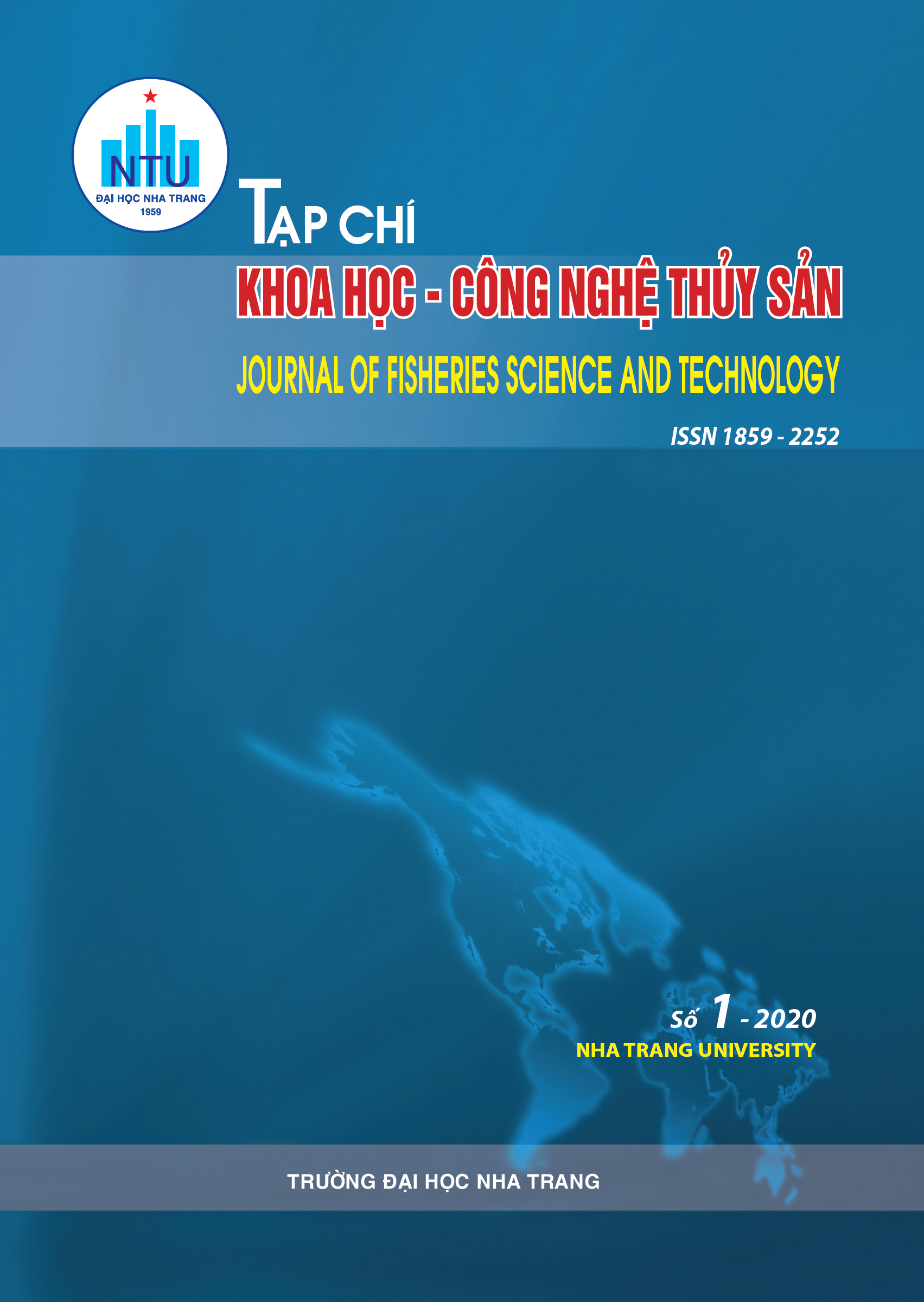##plugins.themes.huaf_theme.article.main##
Abstract
The aim of this study is to evaluate effects of different feeds and salinities on the maturity of greasyback shrimp broodstock. The experiment 1 was conducted with 7 treatments of different feeds (NT1: 100% polychaetes; NT2: 50% polychaetes + 50% mollusks; NT3: 50% polychaetes + 50% crustaceans, NT4: 100% mollusks, NT5:100% crustaceans, NT6: 50% mollusks + 50% crustaceans, NT7: 40% polychaetes + 30% mollusks + 30% crustaceans) at salinities of 32-33‰. The experiment 2 was conducted with 5 treatments of different salinities (NT1: 26‰; NT2: 28‰; NT3: 30‰; NT4: 32‰; NT5: 34‰) with the feed containing 50% polychaetes + 50% mollusks. Broodstocks were grown at a density of 40 individuals/ tank, fed 4 times per day with a dose of 10-20% of their weights. The results in the experiment 1 showed that NT2 gave the highest maturation rate, the highest absolute fertility, the highest actual fertility. NT1 and NT7 resulted in the time from the first eyes cut to the first spawning shortest, the highest number of spawnings/ molting cycle, the shortest time between 2 batches of spawning. NT1, NT2, NT7 and NT3 gave the highest survival rates. In the experiment 2, NT5 gave the highest maturation rate, the highest absolute fertility and the highest actual fertility, the time from the eyes cut to the first spawning shortest, the highest number of spawning/ molting cycles and the shortest time between the 2 batches of spawning. NT1, NT2 and NT3 had the highest survival rates.
Keywords: Greasyback shrimps, Metapenaeus ensis, feeds, salinities, maturity

